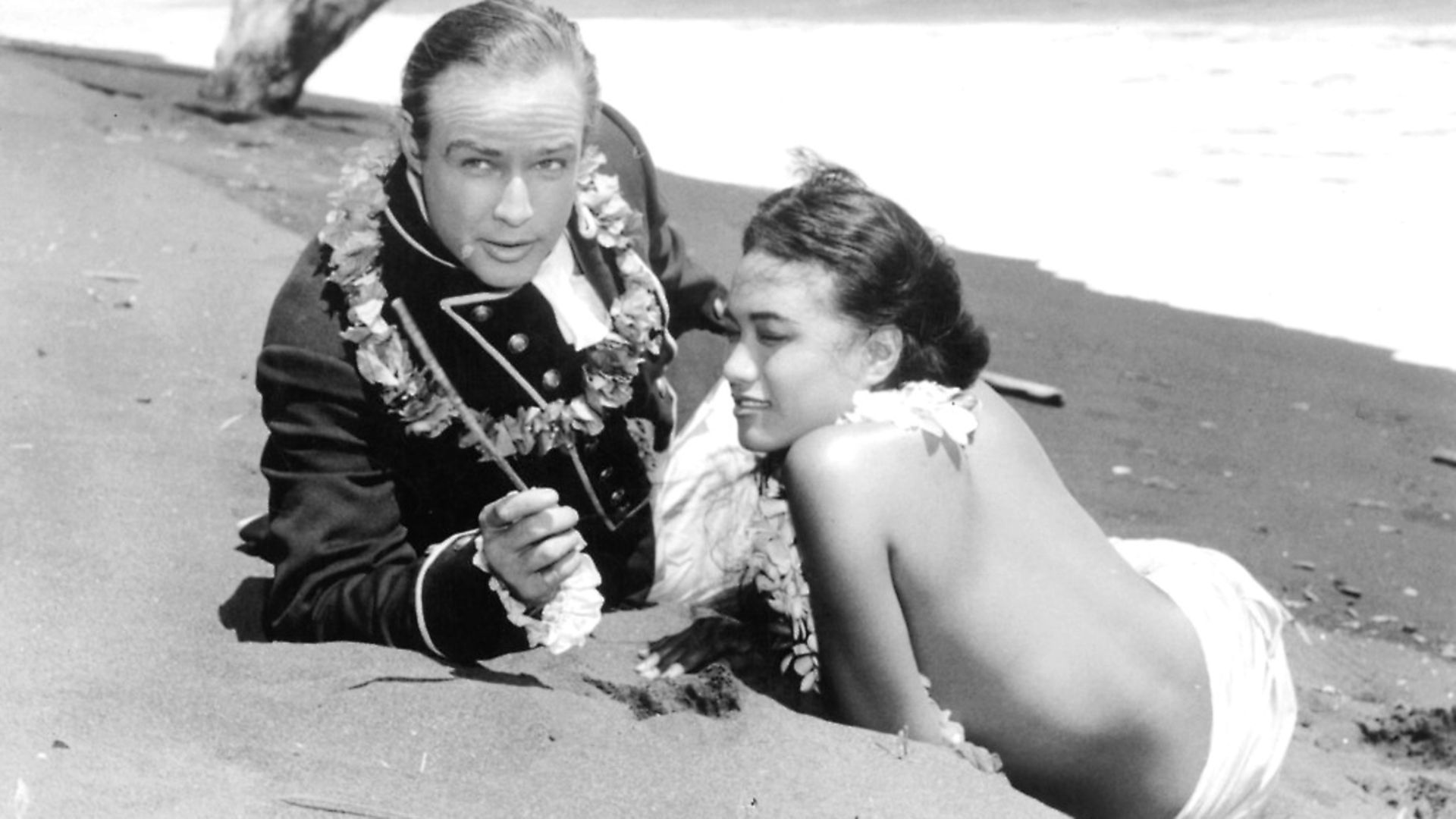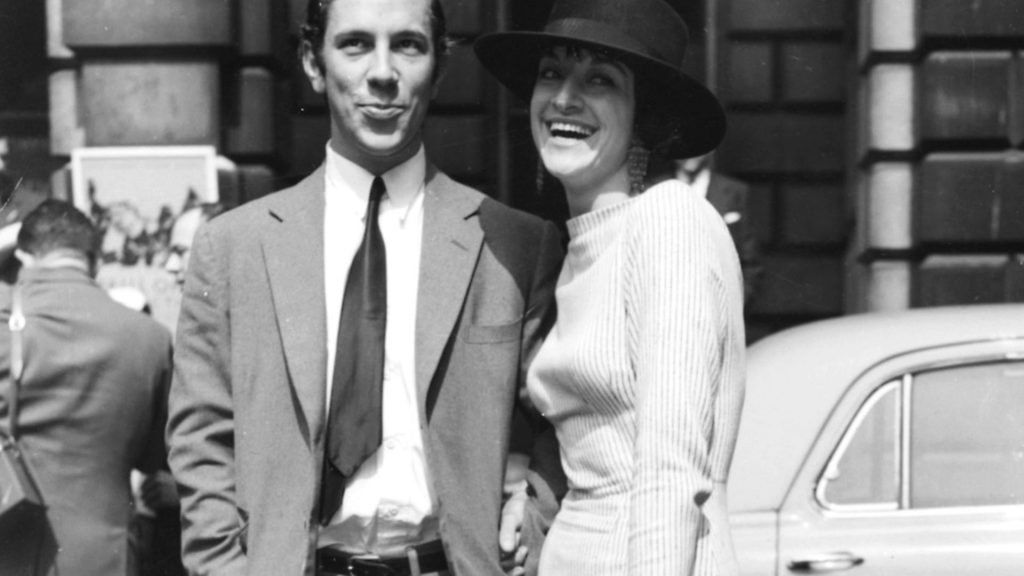
The saga of the Hollywood giant’s sole attempt at fiction is at least as intriguing as the work itself. Forty years after it began, RICHARD LUCK pieces the chronicle together.

Between 1979 and 1989, Marlon Brando made only one film – John G Avildsen’s The Formula – and he only appeared in that because he needed the money. Otherwise, Brando kept as far away from Hollywood as was humanly possible for the better part of a decade. In large part he accomplished this feat by holing up on Tetiaroa, his Tahitian island home.
Though in the South Seas, Brando wasn’t completely removed from the movie industry. On the contrary, he spent much of the 1980s in the company of the Edinburgh-born painter-writer-director Donald Cammell.
Together the pair thrashed out a story designed to restore Brando to super-stardom and transform the Scot from a cult artist into a major Hollywood player. The project was entitled Fan-Tan after a game of chance popular in the gambling houses of Hong Kong. Alas the wager would ruin a relationship and all but kill off Cammell’s career.
What first brought Cammell into Brando’s orbit were the actor’s testicles, way back in 1957. Laid up in a Paris hospital after a pot of coffee scalded his balls, Brando asked French actor Christian Marquand whether he could visit and break up the boredom. Since Marquand was close friends with Cammell, also then resident in the City Of Light, he rightly assumed the film-mad Scotsman would love to meet the premier screen star of the age.
In these unusual circumstances began a friendship that spanned almost 40 years. At the time of their first meeting, Cammell was a successful painter looking for new artistic challenges. His growing passion for cinema saw him turn his hand to screenwriting, a gambit which produced 1968’s Performance, one of the greatest British films of the period.
A heady cocktail of sex and drugs and violence and identity, Performance wasn’t only written by Cammell; he co-directed the film with the revered cinematographer Nicolas Roeg. The picture that emerged so shocked Warner Bros, it sat on a shelf for two years. When it did finally limp into cinemas in 1970, Performance was greeted by no end of outrage and a few, but only a few, glowing notices. Among its fans was one Marlon Brando.
“Marlon saw Donald as an original – one of few,” says producer Elliott Kastner in Donald Cammell: The Ultimate Performance. A fine documentary co-directed by Kevin MacDonald – later to win an Oscar for One Day In September – The Ultimate Performance points up the fact that, at the time Cammell was burning up the screen with his breakthrough film, the great Brando had all but given up on cinema. Indeed, were it not for The Godfather, it’s conceivable the method great would have sat out the whole of the 1970s.
As for the influence Cammell had upon the actor, it seems reasonable to suggest that the edginess and abandon of Performance encouraged Brando to explore the darker corners of the self in Last Tango in Paris (1972). Bernardo Bertolucci’s controversial drama certainly shares thematic concerns with Cammell’s picture, which is only fitting given that Cammell and Brando’s obsessions were as similar as they were rather unsettling.
One thing the pair had in common was their love for a teenage girl called China Kong. To Brando, she was almost a goddaughter, the actor having enjoyed a lengthy relationship with China’s mother. To Cammell, on the other hand, she was the future Mrs Cammell. The sight of the young China (pronounced Chin-err) being swept off her feet by the older, madder, badder Donald Cammell nearly led Brando to call time on the men’s friendship. It was as husband-and-wife, however, that Donald and China came to Tahiti in the early 1980s to finish work on a project Cammell and Brando had begun to thrash out in 1979.
A tale of piracy on the South Seas, Fan-Tan began life as a film treatment, almost became a script, was repurposed as a novel and was then shelved for 20-odd years. The story itself revolves around the antics of one Anatole ‘Annie’ Doultry, like Cammell a son of Edinburgh who like Brando has found a home in South-East Asia and Oceania.
Our hero actually has many things in common with his creators – a passion for Asian and Polynesian women, an appetite for drugs and a fascination with extreme forms of sex, in particular sadomasochism (for evidence of this shared obsession, check out the beatings in Cammell’s Performance and Wild Side and the scenes of Brando having the s**t kicked out of him in On The Waterfront, One-Eyed Jacks, The Chase and Apocalypse Now).
Doultry is also really into guns, just like Cammell who would sometimes attend script meetings with a Glock in his satchel. The lengthy descriptions of vessels and life at sea, meanwhile, are exactly what you’d expect from the heir to the Cammell Laird shipyard empire.
Speaking of the leading character, it’s clear that Doultry was created with the early 1980s Brando in mind. Around that time, the actor was letting his hair and his waistline grow and grow. Not so coincidentally, Doultry is a man with an impressive mane and a beard that he wears in the Chinese style, even painting the tips red on occasion. Annie’s carriage, on the other hand, isn’t just sizeable, it’s the key to one of Fan-Tan’s key twists, one which involves the brigand shooting himself in the flank to cover up his involvement in a hijack.
If he succeeded in fashioning a character that caught his co-writer’s imagination, Cammell was less successful at maintaining Brando’s attention. Notoriously fickle, the actor’s passion for the project began to ebb away the moment Donald and China Cammell returned to the US.
To his credit, Cammell understood that, if you work with Marlon Brando, nothing is going to be straightforward. He therefore came up with another plan for Fan-Tan. For if his collaborator couldn’t be bothered to make it as a movie, how about if he, Donald Seton Cammell, transformed it into a novel?
Before one begins any discussion about Brando and literature, it’s important to bear in mind that the actor was severely dyslexic. What’s more, his disdain for the classics was so great that, when Francis Coppola hired him to play Kurtz in Apocalypse Now at $3.5 million for a month’s work, Brando refused to read Joseph Conrad’s source novel Heart Of Darkness, thus obliging the director to take his star on a week-long river cruise over the course of which, Coppola read the book to the actor.
In spite of the above, Brando was receptive to Cammell’s suggestion, most likely because his writing partner had volunteered to do all the work. The star also liked Cammell’s idea that if Fan-Tan existed as a novel, this would not only help publicise any potential movie adaptation but the sales could help finance said production.
But then, as with the script, Brando cooled on the idea. Okay, so he let his collaborator keep the $50,000 advance, returning the same sum to the publishers out of his, Brando’s, own pocket. What couldn’t be compensated was the amount of time Cammell had spent writing Fan-Tan, time he might otherwise have invested in a directorial career which, due to his eccentricities and refusal to comprise, yielded just four films in three decades.
To make things even worse, Brando put the mockers on a second proposed Cammell collaboration, a crime thriller called Jericho.
“It was a meat and potatoes movie,” Elliott Kastner confirms. “I kept saying to Donald, ‘You can do all the Brecht you want; go out and make a movie that does film rentals.’ But Donald just couldn’t get in there and fight the rounds. It would’ve been worth it. Sure, you get a little bloody but just get in there and stay with it.” Sadly, while the rounds were being fought, Brando was busy throwing in the towel.
And that seemed to be that for both the Brando-Cammell axis and the ill-fated Fan-Tan. In 1996, Cammell – depressed over many things, not least his unstable marriage and studio-imposed changes to his latest film, Wild Side – took his own life in Los Angeles, using his favourite firearm. Six years later, worn down by the imprisonment of his son Christian and the suicide of his daughter Cheyenne, Brando died in LA from congestive heart failure.
An audit of each man’s archive resulted in the discovery of the Fan-Tan film treatment, the aborted Fan-Tan script and the three-quarters of the Fan-Tan novel that Cammell had completed before the book was put on ice. Enlisting the help of noted critic David Thomson to bring the story to completion, Heinemann published Fan-Tan in 2005 to largely negative reviews and all manner of innuendo.
Read today, Fan-Tan feels less like a tawdry cash-in than an interesting idea that merited more time and attention. Although credited to both Brando and Cammell, the sex scenes alone confirm that the book belongs to the latter rather than the former. Likewise the vivid characters, the leading one of which would’ve been a fascinating addition to the Brando oeuvre; Annie Doultry coming on like a cross between Sir William Walker, the mercenary he portrayed in Gillo Pontecorvo’s Burn! (1969), and Lee Clayton, the cross-dressing, multi-accented bounty hunter he played in 1976’s The Missouri Breaks.
And if, even in its ‘completed’ form, it feels somewhat adrift, it’s hard to imagine a fate more befitting Fan-Tan, a heady novel about piracy penned by two wayward geniuses that scuttled their friendship and finished up all at sea.









